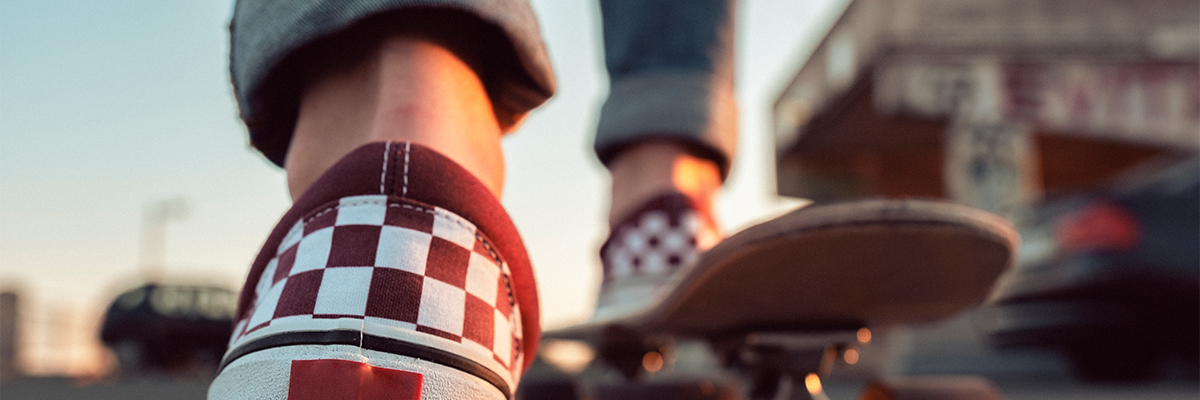
Building a Good Poem Depends On Your Tools and Materials
Long before Daniel B. Summerhill discovered an album of his sister’s poems, and even before his freshman English high school teacher encouraged him to start writing poetry, there was his grandfather. A carpenter by trade, he “made magic with his bare hands” as he created a go-kart for his young grandson, using an old shopping cart, milk crate, pillow, and some shoestrings.
Summerhill likes to think about poetry in the same way: Penning prose involves craftsmanship, attention to detail, resourcefulness, and using any tool available to create something from nothing.
“A carpenter walks into a room that’s a blank space—and he has to build a table. At first, there’s nothing to start with. Then slowly but surely, he amasses the tools, the materials, to build something,” says the assistant professor. “Writing a poem is similar. You witness something, you’re moved by something, you experience something. All you’re left with is this blank void, and as you’re thinking, you gather the tools and materials to make a poem out of that experience.”
A cache of poetry written by his older sister Tanesha jumpstarted Summerhill’s then-middle school imagination about “the amazing things you can do with words.” Since high school, he has been writing poetry, eventually publishing collections of verse (a third is on the way), and in 2022 was named the inaugural poet laureate of Monterey County.
In celebration of National Poetry Month, we sat down with Summerhill to talk about the art of writing poetry, and how he inspires his students to develop what poet Audre Lorde wrote about her literary art: “Poetry is not only dream and vision; it is the skeleton architecture of our lives…”
You’re an award-winning poet, but to many people, reading and writing poetry might seem daunting. How do you teach students to confidently embrace both?
First, we blow up expectations. A lot of students come to class with this expectation of poetry being this secret code you have to crack, and perhaps it can be that. We’re also taught for years that poetry is one thing, and if you don’t fit into that box, then you know, you don’t get it. The way you speak, or think, or operate may be different. So we have to figure out: OK, how can we disrupt that? How can we use your voice in a way that allows you to bring it to the forefront? What are you capable of?
The next thing we try to figure out is who or what a student wants to read—and it doesn’t always have to be a poem. Perhaps it’s a song, so let’s figure out why you like that song. Maybe it’s because of the rhyme, because of the rhythm that’s produced. Well, we can replicate that same thing in a poem. In class, I use film, I use art, and I use music in order for us to think about how those things can help us better understand poems, because poetry doesn’t exist in a vacuum.
It could be a song that makes us come to the page, or a talk with your grandfather. So we have to return to those things and figure out what’s the inspiration. Then, after you’ve discovered who it is you’re into, or what poems or collections you might know, ask yourself: What are you capable of?
Your poems reflect a range of emotions about life and death, Black culture, creativity, memory, and more. In 2022, you wrote a poem about sneakers called, “In Praise of Floating,” that was published in the Wall Street Journal. What was the inspiration for that?
The shoe company Vans sent me a pair of magenta and white checkered canvas shoes, and asked me to write a poem about them. They were actually too big, and I gave them away, but it was cool to kind of sit them on my desk and think about them, not as a shoe, but as something that can actually transport us—not in a physical sense, but in a figurative, metaphorical sense.
So I started thinking: What does a shoe do when you put it on your foot? How do you feel, how does it carry you? What are you thinking about? When you buy a new pair of shoes and you slip them on, where are you mentally, or spiritually? And so the poem is kind of praising the shoes for where they might bring us, beyond this place to somewhere else.
(Editor’s note: To get you around the paywall, here’s the poem)
In Praise of Floating
Praise the sneakers for where they might take us.
Sliding into duality of checkered magenta
and white, what better way to journey? What
better way to sing off the wall than rugged
softness hugging your feet as rubber suspends
your body above the ground. What better way to float?
Praise the shoe that transports us somewhere
more magical than where we are now.
It’s easy to see how you inspire your students. Who takes your poetry class, and why?
I teach both an upper division class, which tends to be writers, and a lower division class, an introduction to poetry class, which fulfills a core arts requirement.
That’s the class where I get to introduce engineering majors, and business majors, and science majors, to poetry. And these kinds of students also bring a different mindset to a writing class. So it’s this wonderful mix of people, personalities, and interests in one room talking about one thing, which is poetry.
What’s interesting to me is that many of the students start the course with a certain mindset, and by the time they leave, they have a completely different understanding about what poetry is, and can be. Again, they’ll come in with this predisposition about what poetry might be, and then over the 10 weeks of the class, we kind of disrupt that expectation and they leave—maybe not a poet or a writer, but with a new-found admiration for the work that poets do.
You often tell your students what the poet Mary Jane Oliver once said about writing poetry: “Our greatest work is to pay attention.” What did she mean?
We have a fast-paced life, especially nowadays—everything is in motion, constantly moving. So the poet’s job is to say, “For just this moment, I’m going to slow down and look at this pair of checkered magenta and white Vans. I’m going to slow down for just a second and look at these flowers and examine these flowers.”
Being a poet is much more about the way you view the world, the way you engage with the world, the way that you have patience and care for the small things in life. The poet Ocean Vuong says if you want to teach young people to care, you teach them poetry because poetry is the art form of caring for small things and small decisions—with every comma, every word, every pause, every line break. Every syllable in a poem is important and intentional.
You contend that poetry and literature should push people to really “work” as readers. Why?
In the Western world, we have a one-directional kind of relationship with literature: We think the writer does all the work, and then we kick our feet up and enjoy the thing. But to me, it should be a two-way street in which the writer does one thing and then we as readers do the work to engage with what they have written.
I tell students, “Let’s figure out how we can use this poem to better understand ourselves,” and then maybe be transported to somewhere the poet wants us to go. And the language is the vehicle that gets us there. I think about a poem, a piece of literature, or even a book as an object which two people hold at the same time. Like when handing something off, you are both holding it—even if only for a brief moment. The poem can and should also be that. A story, a feeling, an image both the writer and the reader can hold at the same time.
Editor’s note: The Santa Clara Review, in collaboration with Creative Writing/English and SCU tUrn, will host a poetry reading, conversation, and book signing/reception with SCU English Professor Daniel Summerhill, Ashia Ajani, and James Cagney, from 6 p.m. to 7:30 p.m. on Thursday, April 25, in the SCU Library’s Saint Clare Room. For more information, visit this link.

